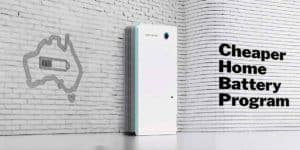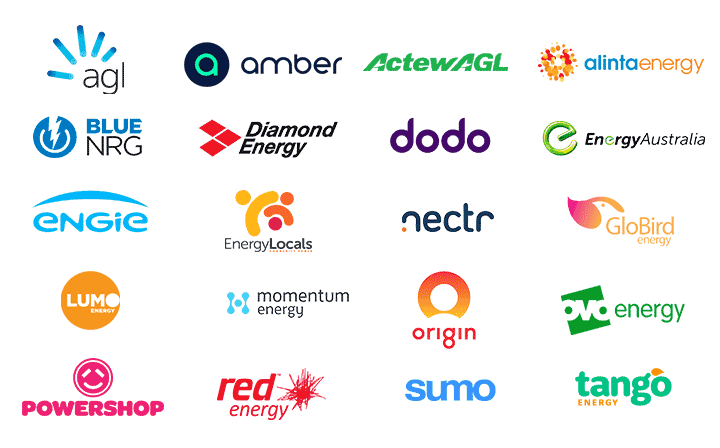 Want to know which electricity retailer is offering the best solar feed-in tariffs for households? Listed below are electricity retailer’s latest solar feed-in tariffs for households in ACT, NSW, NT, QLD, SA, TAS, VIC and WA including key feed-in tariff conditions.
Want to know which electricity retailer is offering the best solar feed-in tariffs for households? Listed below are electricity retailer’s latest solar feed-in tariffs for households in ACT, NSW, NT, QLD, SA, TAS, VIC and WA including key feed-in tariff conditions.
What is a Solar feed-in tariff? Solar feed-in tariffs (FIT) are the payment made to solar owners for the energy they generate and send back into the grid. Like a tiny power station, any extra energy generated through your solar panels that you don’t use can be sold back into the grid at the feed-in tariff rate. The retailer-provided solar FITs listed here do not include any bonus feed-in tariff that may be provided by state or territory governments. Premium FITs are shown on the retailer feed-in tariff pages linked below.
A good solar feed-in tariff is important, but to find the best deal you also need to value usage rates and supply charges. It’s easy to get it right with WATTever’s comprehensive electricity comparison offering a personalised cost ranking of publicly listed electricity plans from all retailers, based on your unique energy use and solar export to help you make serious savings. We include all retailers, tariff types, discounts, solar feed-in tariffs and limits, input for concessions and more. For more tips see our essential guide to comparing electricity for solar owners.
Select your State/Territory:
New South Wales solar feed-in tariffs for households by electricity retailer (cents per kWh exported)
Queensland solar feed-in tariffs for households by electricity retailer (cents per kWh exported)
South Australia solar feed-in tariffs for households by electricity retailer (cents per kWh exported)
Standard feed-in tariffs
Time-varying feed-in tariffs
Victoria solar feed-in tariffs for households by electricity retailer (cents per kWh exported)
Standard feed-in tariffs
Time-varying feed-in tariffs
Note: In Victoria, the Essential Services Commission sets a mandatory minimum feed-in tariff for households.
Australian Capital Territory solar feed-in tariffs for households by electricity retailer (cents per kWh exported)
Tasmania solar feed-in tariffs for households by electricity retailer (cents per kWh exported)
Western Australia solar feed-in tariffs for households by electricity retailer (cents per kWh exported)
Standard feed-in tariffs
Time-varying feed-in tariffs
We display minimum and maximum feed-in tariffs (FITs) as some retailers offer different FITs on different plans. Click “View” to see retailer and premium FITs by plan.
Feed-in tariffs (FITs) shown exclude GST. GST on feed-in tariffs is only paid to ABN holders.
Feed-in tariffs are sourced from the Retailer's published Basic Plan Information Documents/Energy Price Fact Sheets. Some plans may have additional conditions relating to solar feed-in tariffs not displayed here. Please review the Retailer's Terms and Conditions before taking up any contract.
FITs are typically variable, and future FITs may be subject to change by the Retailer.
Where a Premium FIT is paid, please note that all premium feed-in tariff schemes are closed to new entrants, so if you are not currently receiving a premium feed-in tariff, you will only be able to receive the standard feed-in tariff.
“Market-linked plans” that have their rates tied directly to the wholesale market spot price are not included in the tables above because these rates vary every day and cannot be compared like-for-like with most plans where the published rate is the rate you pay. To view indicative rates and feed-in tariffs published for market-linked plans, please see WATTever’s rates pages for Amber.
– Battery only and Electric Vehicle only plans that require the household to have a battery or EV are not included in the tables above due to the small portion of consumers who qualify for these plans. These plans are still visible on the retailer solar feed-in tariff pages. ActewAGL offers electricity plans in a small number of postcodes in the Endeavour Energy and Essential Energy networks. Please refer to the ActewAGL feed-in tariff page for their plans.

Cheaper Home Battery Program set to boom
The Federal government’s new $2.3 billion Cheaper Home Batteries Program offers a generous battery discount for Aussie households and small businesses.

Ausgrid Community Battery trial
Over the last 6 months of 2024, Ausgrid has rolled out 19 Community Batteries across parts of Sydney, Newcastle and the Central Coast.

Ausgrid Solar Tax. Annoying, but it’s no apocalypse.
There’s been a fair bit of noise about the so-called “sun tax” that solar households in the Ausgrid network (Sydney/Hunter/Central Coast) will soon be subject to.



